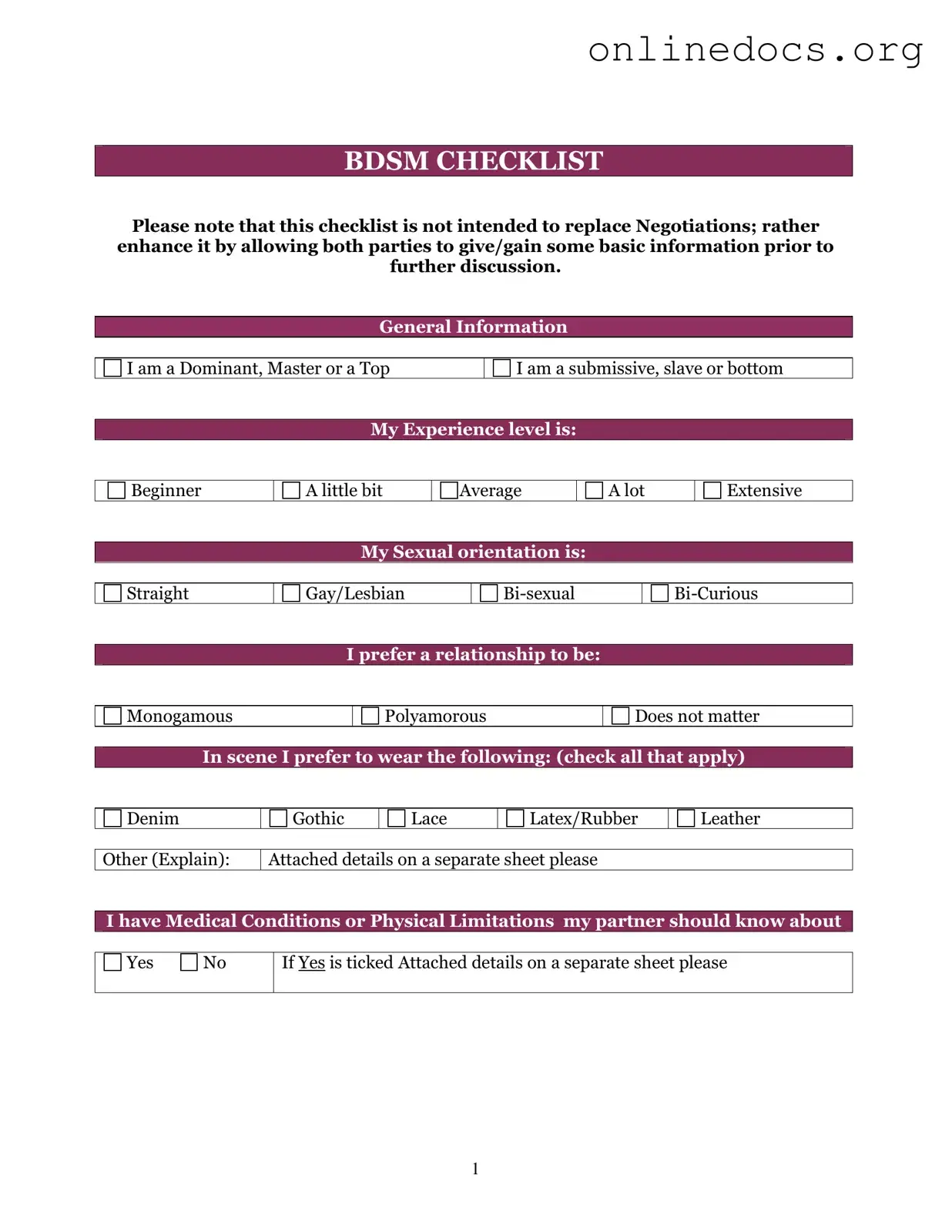Misconception 1: The BDSM Checklist is only for experienced practitioners.
Many believe that only those deeply involved in BDSM should use the checklist. In reality, it serves as a valuable tool for anyone, regardless of experience level, to communicate preferences and boundaries.
Misconception 2: The checklist is a contract.
Some think that filling out the checklist creates a binding contract. This is not true. It is a guide to facilitate discussions about desires and limits, not a legal document.
Misconception 3: The checklist is only about physical activities.
While it includes physical practices, the checklist also addresses emotional and psychological aspects. Understanding consent and emotional boundaries is just as important.
Misconception 4: You must fill out the entire checklist.
People often feel pressured to complete every section. However, it is perfectly acceptable to skip items that do not apply or are not relevant to the discussion.
Misconception 5: The checklist is a one-time tool.
Many assume the checklist is only useful at the beginning of a relationship. In truth, it should be revisited regularly as interests and boundaries can change over time.
Misconception 6: Using the checklist means you are not spontaneous.
Some believe that relying on a checklist stifles spontaneity. On the contrary, it can enhance spontaneity by ensuring that all parties are aware of each other's boundaries and desires.
Misconception 7: Everyone will have the same preferences.
It is a common misconception that partners will share identical interests. Each person has unique preferences, and the checklist helps uncover these differences for better communication.
Misconception 8: The checklist is only for BDSM relationships.
Many think the checklist is exclusive to BDSM dynamics. However, it can be beneficial in any relationship where boundaries and consent are important, enhancing mutual understanding.
